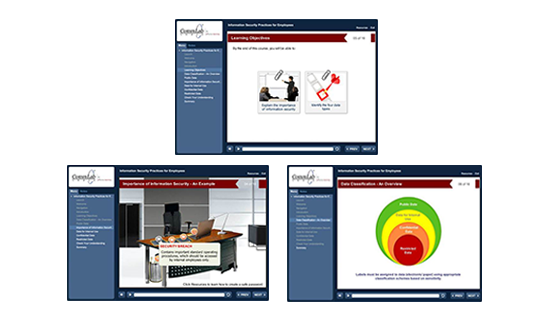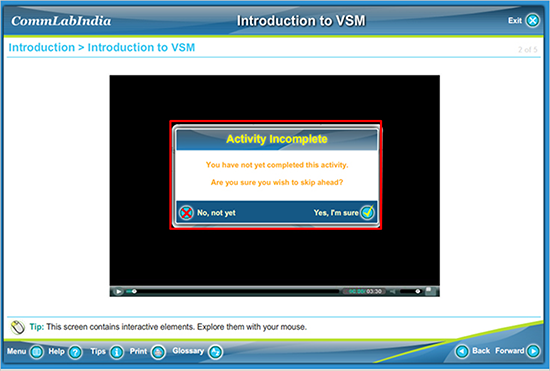3 Tips to Ensure the Success of Your E-learning Course

All eLearning professionals, when developing eLearning deliverables, must ensure that their training material achieves the most encouraging results. Therefore to achieve better training outcomes, we must always keep the following 3 things in mind.
- How sufficient is the training material to the learner?
- How will the training help the learner in doing his day–to-day work?
- How relevant is the training material?
Let’s look at them in more detail.
1. How sufficient is the training material to the learner?
As instructional designers, we should always keep in mind that correct amount of content is addressed in the eLearning course. Firstly, we need to write the learning objectives based on which the content is addressed. Each objective should be supported by approximately the same degree or amount of subject-matter, if one objective within a unit takes an hour to cover, the other units of the same course should not take only a few minutes to cover.
We should ensure that the content of the eLearning course is sufficient in substance and detail and is consistent with course objectives. We should not give too much information in a short amount of time. Trainings with larger time duration prevent learners from understanding the content, whereas trainings with shorter duration allow for proper comprehension, retention and application of the information.

2. How will the training help the learner in doing his day-to-day work?
Instructional designers should make sure that the concept taught in the eLearning course is useful to the learner. We should always ensure that the concept matches to the learner’s day-to-day life situation. For example, create scenarios which learners experience in their day-to-day lives. Allow your learners to actually think and reflect. Only then, you can transform even the driest and dull subject into a truly remarkable eLearning experience. Many eLearning courses are not successful because learners do not see the concepts they are learning as relevant to their daily tasks. We should always think from the learner’s point of view and teach him the concept which is actually useful and applicable.

3. How relevant is the training material?
As instructional designers, it’s important to design a course in such a way that learners can learn what they want to learn, when they want. Adult learners learn independently and like to explore the content through examples and address problems through interactive exercises. An eLearning course with restricted navigation will not be a good option for the adult learner; adults don’t like to be restricted. Adult learners come with a lot of experience, hence we should not force the learners to visit the slides which may include concepts they already know. They choose a course because it helps them improve their performance at their workplace and meet the changing demands of work.

If every eLearning professional keeps these 3 tips in mind before developing eLearning deliverables, then the training material will be of great use in achieving the most encouraging result.



![Everything You Wanted to Know about eLearning Translations (But didn’t know whom to ask)! [Infographic]](https://blog.commlabindia.com/hubfs/Imported_Blog_Media/elearning-translation-overview-info.jpg)

